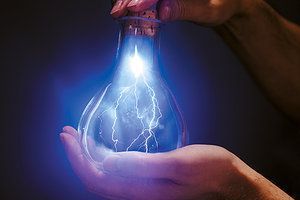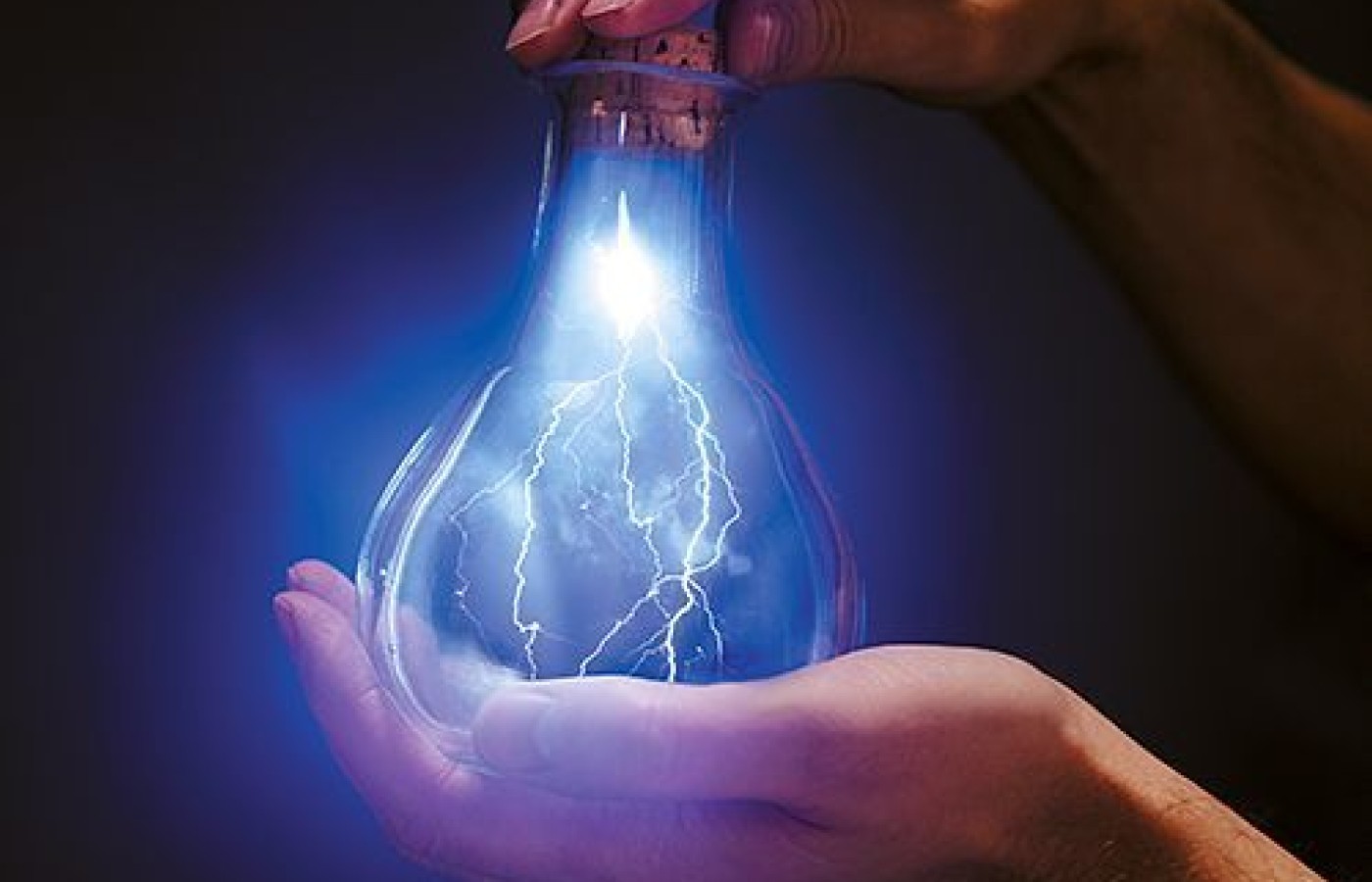New York's highest court of appeals has held that no-fault insurers cannot deny no-fault benefits where they unilaterally determine that a provider has committed misconduct based upon alleged fraudulent conduct. The Court held that this authority belongs solely to state regulators, specifically New York's Board of Regents, which oversees professional licensing and discipline. This follows a similar recent ruling in Florida reported in this publication.
Rephrasing the Subluxation: Capturing Lightning in a Bottle
For all these years, as we know only too well, debates have raged both within and beyond the chiropractic community over subluxation: what it is or even why it is. It has been a question as to not only whether it can be shown as a clinical reality by objective measurements, but also what its attributes really are. Capturing its essence with a definition most can live with is not unlike the renowned author Mark Twain's endeavor to pin down the precise word in his writings, about which he declared:
"The difference between the almost right word & the right word is really a large matter – It's the difference between the lightning bug and the lightning."1
Capturing this lightning – or the proper definition of subluxation – in a bottle is a goal no one can dispute. Thus it is that the emergence of research with an eye toward systemic and arguably nonmuscular domains responding to spinal manipulation could be credited with the spanking-new, progressive recasting of the chiropractic definition of the S-word set to appear in the fourth edition of the Clinical Practice Guideline issued by the Council on Chiropractic Practice. The definition reads:
"Subluxation is a neurological imbalance or distortion in the body associated with adverse physiological responses and/or structural changes, which may become persistent or progressive. The most frequent site for the chiropractic correction of the subluxation is via the vertebral column."2

Call it a debutante's presentation at the cotillion, if you will. The term neurological imbalance has now come out of the closet, taking precedent over so many of the ossified terms that used to be grounded in segmental, articular, or vertebral terms from the 1930s for at least 60 years.3 Yet for all this time, neurological status was lurking in the shadows while seeming to take a back seat to spinal fixations – despite the fact that no less than D.D. Palmer himself declared over a century ago that "life is the expression of tone ... Tone is the normal degree of nerve tension."4 (italics mine)
To what may we attribute this audacious (if not auspicious) turn of events? The Council on Chiropractic Practice itself has stated2 that "the change in the definition represents the Board's analysis and research into the continued evidence supporting spinal adjustment of dysfunctional vertebra leading to brain metabolic5 and transient cortical plastic changes in the brain and nervous system."6 A few more outstanding chapters in research that have paved the way toward this dramatic revision of the S-word's definition should be cited here:
- The finding that spinal manipulation at the C5/C6 spinal segment is regionally related to the infraspinatus, but not gluteus medius muscle, suggesting in the authors' own words that "the primary physiological effect of SMT may be neurological rather than changed joint mechanics."7 (italics mine)
- The dramatic observation by Karason and Drysdale that a high-velocity, low-amplitude thrust at the lumbosacral junction produced a significant increase in cutaneous blood flow over the L5 dermatome in nonsmokers, but not smokers, suggesting the role of a nicotine-sensitive receptor or other trigger.8
- The award-winning research of Song and his co-workers at Parker College, who demonstrated a broad spectrum of anti-inflammatory, joint-specific effects of instrument-adjusting treatments in a rat model encompassing behavioral, cytological and neurophysiological benchmarks.9
- The demonstration that a bilateral, hypothenar-type adjustment accompanied by audible cavitation specifically produced a decrease in the production of the inflammatory cytokines tumor necrosis factor α and interleukin-1-ß in human subjects.10
- The revelation that two patients with cervicogenic headache posted reductions of tumor necrosis factor α exceeding 50 percent after four weeks of manipulative therapy.11
- Continuing with observations regarding the inflammatory cytokines, the observation that the direction of strain in cultured fibroblasts determined the levels of specific cytokines produced, raising the practical concern that the effects of manipulation may vary in patients depending upon tissue strain directions.12
- Two of the outstanding colic studies, one of only two areas of pediatric chiropractic care supported by clinical trials and possibly involving nonmusculoskeletal mechanisms, demonstrating that manipulation rapidly produced significant reductions of this disorder.13-14
Both these discoveries and the resulting redefinition of the subluxation didn't exist 15 years ago. It's an important object lesson that tells us how concepts change with the accumulation of new information, simply to demonstrate that the chiropractic community (or any health care profession, for that matter) will never grow without the continuation of research. Adequate research funding to allow these discoveries to go forward is an absolute necessity and must be regarded as the highest of priorities.
That said, where does the profession go from here? For one, it needs to take into account not only spinal irregularities, but also the extremities, muscular disorders, nutritional concepts and stress management if it is to grow into a full-service, primary preventive care profession. Since we began this discussion with neurological disorders, they comprise the ideal platform from which to address (1) structural derangements, (2) inflammations, (3) nutritional and absorption problems, (4) hormonal imbalances, and (5) emotional stress.
It is my personal conviction that my own area of applied kinesiology goes directly to the heart of the matter with its conception of muscle testing as a transcript of the neurological disorders we speak of, such that the chiropractic profession would do well to shake hands with AK and encourage its research efforts that are just beginning to emerge. It is only this grounding that has enabled all of chiropractic to establish the credibility it has earned over the past 30 years from research, a lesson hopefully learned.
References
- Twain M. Letter to George Bainton, Oct. 15, 1888.
- Council on Chiropractic Practice, Clinical Practice Guidelines, 4th Edition, 2013.
- Gatterman M. What's in a Word? In: Gatterman M [Ed.]. Foundations of Chiropractic Subluxation. St.Lous, MO: Mosby-Year Book, 1995:5-17.
- Palmer DD. The Chiropractor's Adjuster (The Text-Book of the Science, Art, and Philosophy of Chiropractic). Portland, OR: Portland Printing House, 1910.
- Ogura T, Tashiro M, Masud M, Watanuki S, Shibuya K, Yamaguchi K, Itoh M, Fukuda H, Yanai K. Cerebellar metabolic changes in men after chiropractic spinal adjustment for neck pain. Alt Ther Health & Med, 2011;17(6):12-7.
- Haavik-Taylr H, Murphy B. Altered central integration of dual somatosensory cortex sensory information after cervical spine manipulation. JMPT, 2010;33(3):178-88.
- Srbely J, Vernon H, Lee D, et al. Immediate effects of spinal manipulative therapy on regional antinociceptive effects in myofascial tissues in healthy young adults. JMPT, 2013; doi: 10.1016 in press.
- Karason AB, Drysdale IP. Somatovisceral response following osteopathic HVLAT: a pilot study on the effect of unilateral lumbosacral high-velocity low-amplitude thrust technique on the cutaneous blood flow in the lower limb. JMPT, 2003;26(4):220-5.
- Song XJ, Gan Q, Cao J-L, Wang Z-B, Rupert RL. Spinal manipulation reduces pain and hyperalgesia after lumbar intervertebral foramen inflammation in the rat. JMPT, 2006;29(1):5-13.
- Teodorczyk-Injeyan JA, Injeyan HS, Ruegg R. Spinal manipulative therapy reduces inflammatory cytokines but not substance P production in normal subjects. JMPT, 2006;29(1):14-21.
- Ormos G, Mehnishi JN, Bakacs T. Reduction in high blood tumor necrosis factor alpha levels after manipulative therapy in 2 cervicogenic headache patients. JMPT, 2009;32(7):586-91.
- Egan TS, Meltzer Kr, Standley PR. Importance of strain direction in regulating human fibroblast proliferation and cytokine secretion: A useful in vitro model for soft tissue injury and manual medicine treatments. JMPT, 2007;30(8):584-92.
- Wiberg JMM, Nordsteen J, Nilsson N. The short-term effect of spinal manipulation in the treatment of infantile colic: a randomized controlled clinical trial with a blinded observer. JMPT, 1999;22(8):517-522.
- Miller JE, Newell D, Bolton JE. Efficacy of chiropractic manual therapy on infant colic: a pragmatic, single-blind, randomized controlled trial. JMPT, 2012;35(8):600-607.



